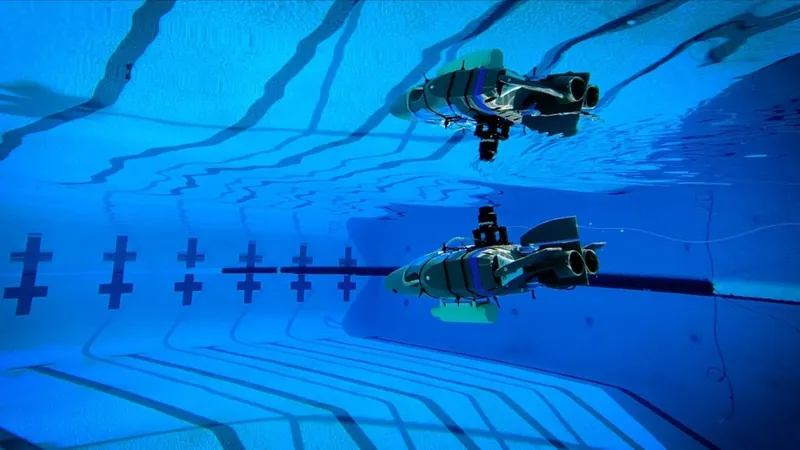
NASA’s Groundbreaking Miniature Robots Set to Unlock Secrets of Europa’s Ocean
2024-11-23
Author: Jia
Europa: A Prime Candidate for Extraterrestrial Life
The SWIM project is more than a solitary venture; it’s an integral part of NASA’s overarching mission to understand whether environments beyond Earth harbor life. The much-anticipated Europa Clipper mission, set for launch in 2030, aims to conduct flybys of Europa. This mission will investigate its ice-bound ocean and analyze its potential habitability. The SWIM project takes this a step further by planning to deploy a swarm of tiny, cell phone-sized robots underneath Europa’s icy shell, searching for key indicators of life, such as chemical signals and temperature fluctuations.
Recent advancements have seen these robots undergo rigorous testing, showcasing their ability to navigate complex search patterns in water and react to simulated environmental stimuli. These developments are essential for preparing the robots to operate autonomously in the unforgiving conditions on Europa.
The Technology Behind SWIM
Ethan Schaler, a principal investigator of the SWIM project based at NASA's Jet Propulsion Laboratory, emphasizes the significance of the project: "To find environments conducive to life, we must explore aquatic systems that might exist on other celestial bodies. Developing autonomous robots that can operate far from Earth is crucial."
The initial prototypes span approximately 16.5 inches in length and have demonstrated their capacity for intricate maneuvers, even successfully spelling out "J-P-L" underwater. Future iterations are set to be more compact, measuring around 5 inches long. These robots will be outfitted with an array of sensors capable of measuring temperature, pressure, and chemical composition, which are vital for analyzing extraterrestrial environments. Moreover, researchers at Georgia Tech are collaborating to design a specialized compact sensor chip that will enhance the robots’ environmental data collection capabilities.
Beyond Europa: Potential Earth Applications
The implications of the SWIM robots extend beyond the icy waters of Europa. They could also significantly contribute to oceanographic research and investigations beneath the polar ice on Earth, collecting invaluable data that could enhance our understanding of aquatic ecosystems. The project is backed by NASA's Innovative Advanced Concepts program, marking a pivotal advancement not only in the realm of space exploration but also in the field of robotics technology.
As we advance towards the planned exploration of distant ocean worlds, the SWIM project stands at the forefront of laying the groundwork for countless future missions. The tantalizing prospect of unveiling the mysteries of Europa’s ocean could bring humanity one step closer to answering the age-old question: Are we alone in the universe?




 Brasil (PT)
Brasil (PT)
 Canada (EN)
Canada (EN)
 Chile (ES)
Chile (ES)
 España (ES)
España (ES)
 France (FR)
France (FR)
 Hong Kong (EN)
Hong Kong (EN)
 Italia (IT)
Italia (IT)
 日本 (JA)
日本 (JA)
 Magyarország (HU)
Magyarország (HU)
 Norge (NO)
Norge (NO)
 Polska (PL)
Polska (PL)
 Schweiz (DE)
Schweiz (DE)
 Singapore (EN)
Singapore (EN)
 Sverige (SV)
Sverige (SV)
 Suomi (FI)
Suomi (FI)
 Türkiye (TR)
Türkiye (TR)